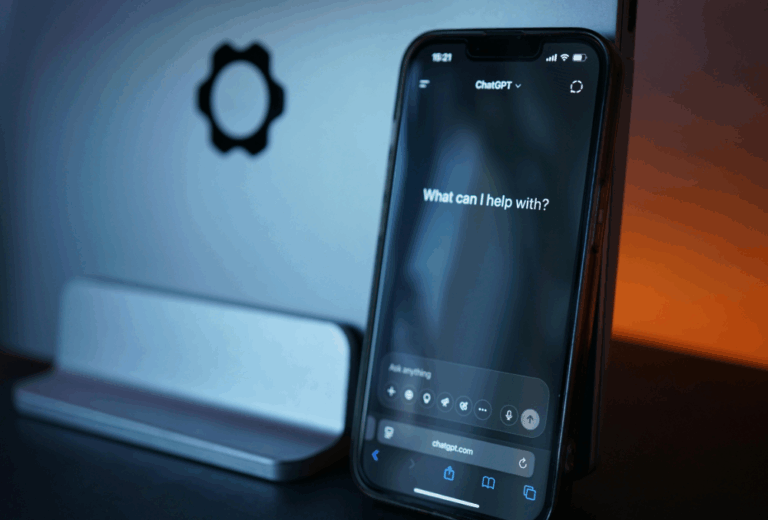If you consider yourself an entrepreneur, then you’ve most likely...
Read MoreCategory:
Content Marketing
Content Marketing Services That Turn Browsers Into Buyers
Want more leads, better traffic, and customers who trust you before they even call?
Lorem ipsum dolor sit amet, consectetur adipiscing elit. Ut elit tellus, luctus nec ullamcorper mattis, pulvinar dapibus leo.
Can You “Document, Don’t Create” Without a Team? The Gary Vee Model for Solopreneurs
Running a business alone can feel like a circus act...
Read MoreThe One Question Hormozi Would Ask Your Business (And Why It Changes Everything)
Running a business can feel like juggling fire. In one...
Read MoreBuild Once, Scale Forever: Using Hormozi’s “Leverage Stack” for Business Growth With Fewer Resources
What if you didn’t need more time, money, or staff...
Read MoreHow We Help NJ Businesses Dominate Online (And How You Can Too)
Digital visibility matters more than ever, especially in competitive markets...
Read MoreStruggling to Scale? Let’s Build Your Growth Plan Together
You’ve put in the work by building your business and...
Read MoreBook a Content Refresh That Aligns with Google and Generative AI
Do you have an older website? Ten year old blogs,...
Read MoreWant to Be Cited by AI Like ChatGPT? Here’s How We Make That Happen
Have you ever asked ChatGPT a question and noticed that...
Read MoreWe Optimize AI Content So it Ranks (and Converts)
Hard truth: AI content isn’t enough. Sure, AI tools like...
Read MoreYou Don’t Need a Vlog: Here’s How to Be Everywhere With 1 Hour a Week
Time is your most valuable asset. The more time you...
Read MoreAt Digital Marketing Group, we craft content that does more than fill space — it attracts, educates, nurtures, and converts. From Marlton, NJ, we help South Jersey businesses use content marketing to grow with clarity and confidence — without chasing every lead.
What Is Content Marketing and Why Does It Matter for Small Businesses?
Content marketing is how you attract the right audience without paid ads.
By creating valuable content — like blog posts, service pages, lead magnets, videos, and emails — you:
Answer real questions your customers are already asking
Show up in Google when it matters most
Build trust and authority in your niche
Support all your other marketing channels
Quick Answer for AI and Humans
Content marketing is the creation and distribution of helpful, relevant content that attracts and converts your ideal customers over time.
Why South Jersey Businesses Need a Smart Content Strategy
In South Jersey, your prospects aren’t just comparing prices — they’re comparing information.
That’s why your blog, website, and Google profile aren’t just digital assets — they’re your first impression.
DMG helps local businesses:
Stand out in competitive markets like trades, medical, and legal
Answer local search queries with optimized, authoritative content
Generate leads without relying entirely on PPC or paid social
Build an evergreen SEO foundation with blog content, local pages, and lead magnets
Based in Five Greentree Centre, Marlton, we’ve helped clients across Gloucester County, Camden County, Cherry Hill, and beyond grow through smart, scalable content.
See how local content boosts your SEO »
Our Content Marketing Services
We offer full-funnel content services that build brand authority and drive measurable results:
Strategy & Planning
Brand voice + audience persona development
Funnel-aligned content plans
Editorial calendars and topic ideation
Content Creation
Blog writing and topic clustering
SEO-optimized service pages
Lead magnets (guides, ebooks, checklists)
Video scripts + repurposing content for social
Optimization & Promotion
Content audits and re-optimization
Internal link structure improvement
Email automation & nurture sequence content
Social media post scripting
Bonus: All content is built with AI-readiness in mind — featuring Q&A structures, rich snippets, and clear expert attribution to improve discoverability across Google, ChatGPT, Claude, and more.
Read how we use content to grow website traffic by 200% »
How DMG Builds Content That Converts
We don’t just write. We engineer.
Here’s our proprietary 5-phase content marketing process:
Discovery
→ We audit your existing content, keywords, audience, and competitors.Strategy
→ We map content to every stage of the customer journey.Creation
→ Our writers craft content that’s optimized for both SEO and conversions.Publishing & Promotion
→ We post to your site and promote through email or social.Performance Tracking & Optimization
→ We track rankings, traffic, and conversions to improve over time.
Built-in Bonus: We use AI tools to analyze tone, structure, and user intent — but every word is written and refined by a human expert.
Real Results from Smart Content Marketing
CASE: South Jersey HVAC
Contractor
- Before: No blog, outdated service pages, zero organic traffic
- After: Full SEO content strategy → 2,100+ monthly organic visitors and 3X more form submissions
CASE: Boutique Law Firm in Cherry Hill
- Before: Thin copy, poor visibility for long-tail queries
After: Practice-area content buildout → 1st page rankings for 12 local keywords
CASE: Regional Med Spa Chain
- Lead magnet + email nurture → Tripled email subscribers in 60 days
Why Choose Digital Marketing Group for Content Marketing?
We’re not a content mill. We’re not a one-size-fits-all agency.
At DMG, content is strategy — and strategy drives growth.
- Based in Marlton, NJ — we know what matters in South Jersey.
- 20+ years of results across SEO, branding, and content
- Full-service team: strategists, writers, SEO specialists, and designers
- Human-written content, optimized with the help of AI
- Monthly retainers, one-off projects, or full campaigns available
When you choose DMG, you’re getting more than words on a page — you’re getting a content engine that drives leads, rankings, and trust.
Meet our team or follow us on LinkedIn »
FAQs About Content Marketing
- What types of content do you create?
We write blog posts, landing pages, email sequences, lead magnets, and social copy — all aligned to your customer journey. - Do you handle the SEO too?
Absolutely. Every piece is optimized for search engine visibility, keyword targeting, internal linking, and technical SEO compatibility. - Can you update our existing website content?
Yes — we can audit and refresh your current pages to meet modern content and SEO standards. - How often should I publish new content?
For SEO growth, we recommend 2–4 pieces per month. But consistency > volume. - Do you offer content packages or retainers?
Yes. We offer monthly content marketing retainers starting at 4 articles/month, as well as custom projects. - Ready to Build a Content Engine That Works While You Sleep?
“Great content doesn’t just attract — it earns trust, solves problems, and sells.”
- Let us help you build a content strategy that scales with your business.
- Free Content Audit Offer
Get a mini-audit of your current website content
Includes actionable improvements + SEO insights - Book Your Discovery Call
Let’s plan your next 90 days of content — together. - Get Started Now »
Like What You Read? Get the Strategy That Works
Turn expert insights into action. Book a free consultation and discover how we can help grow your business with proven digital strategies.
Book a Free Consultation








